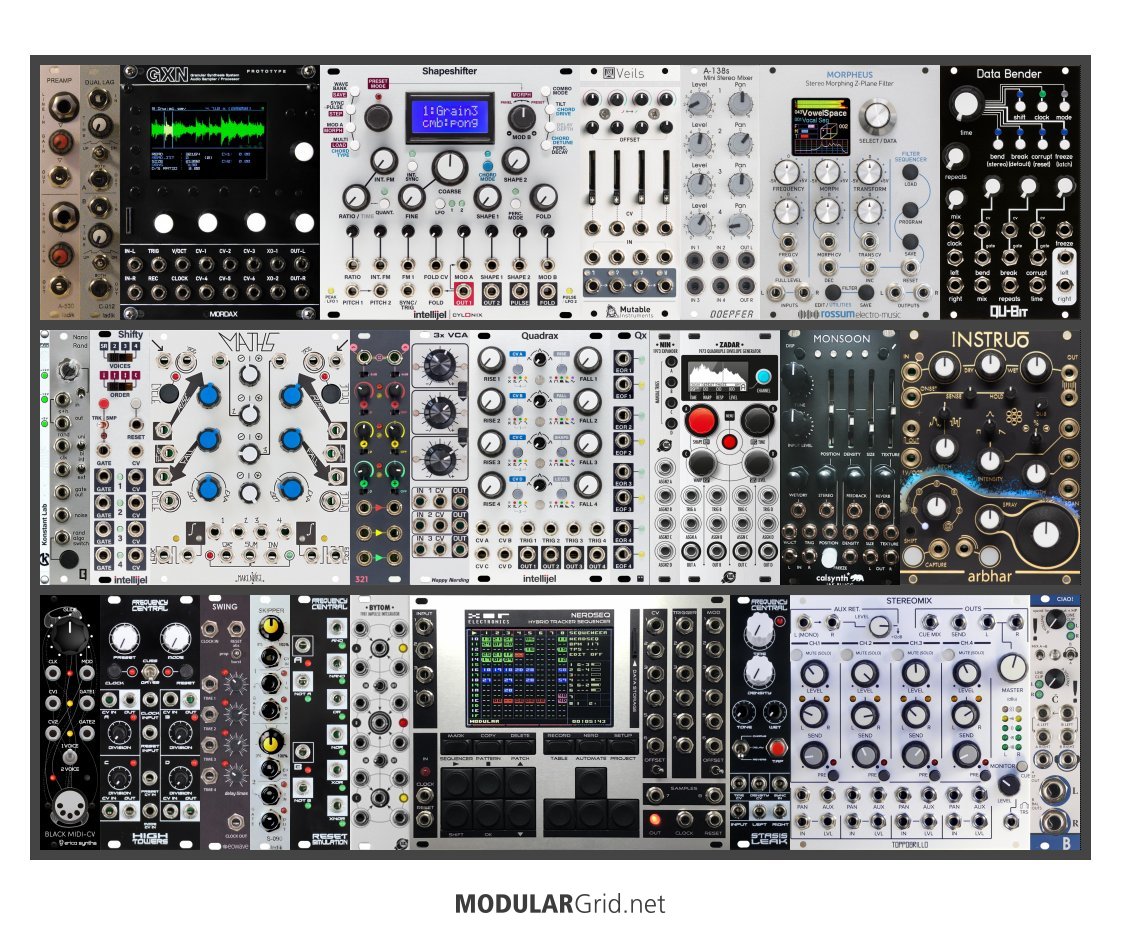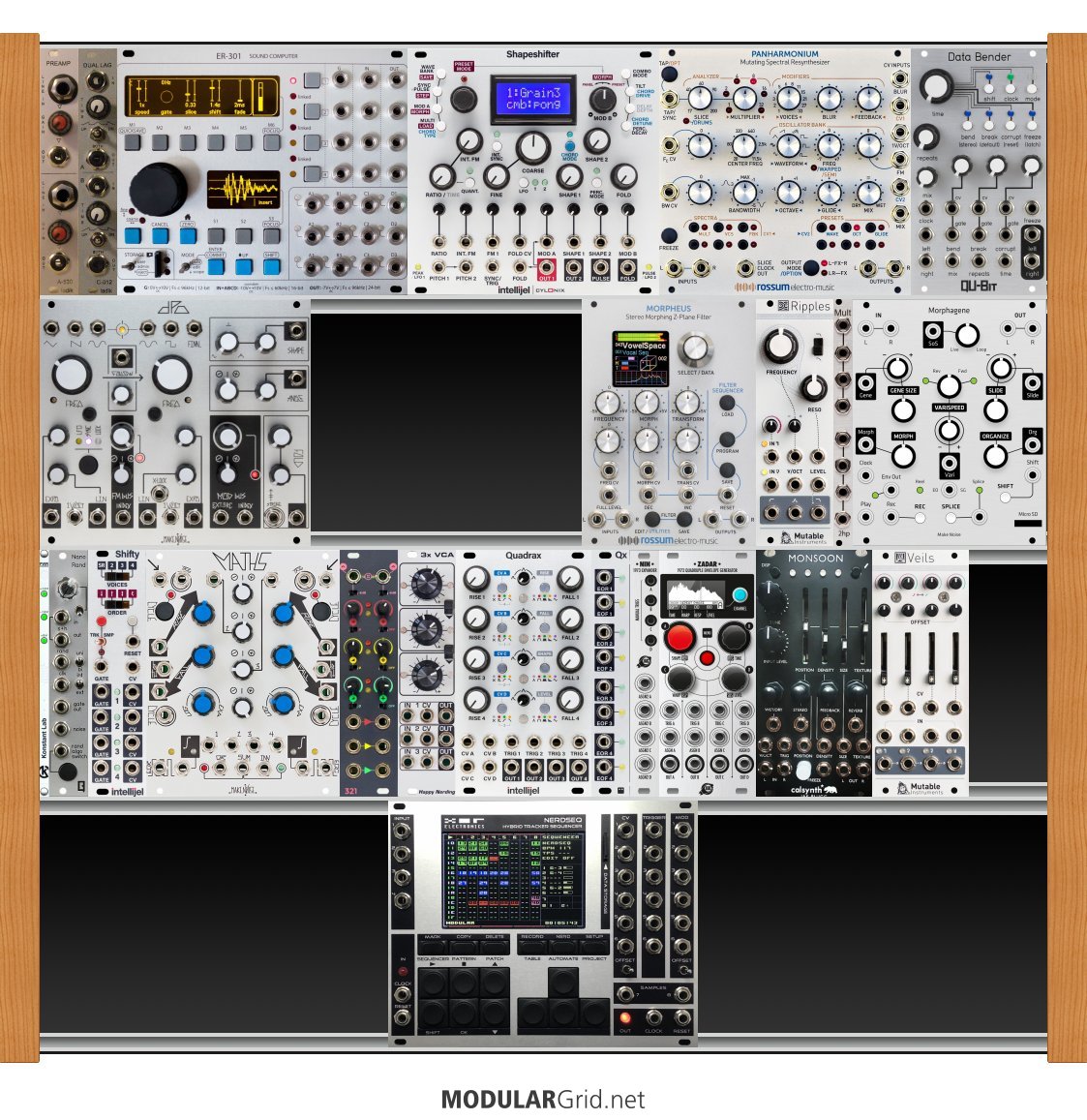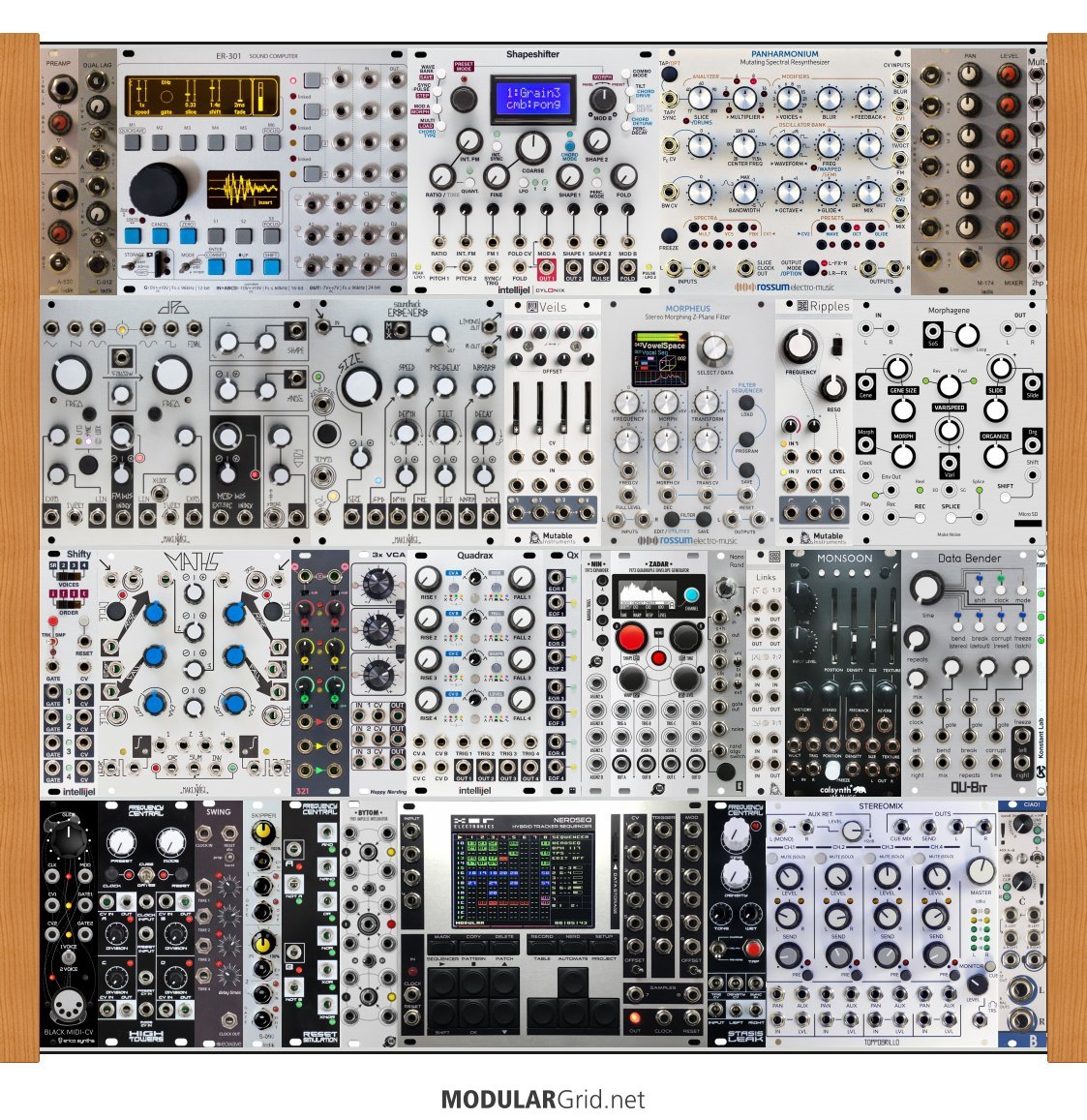Ripped into this...since the aim was to make a creative device for granular and wavetable synthesis, but there was an awful lot wrong with the implementation, I jumped in and came up with a little something that goes in one of Case From Lake's 3 x 104 cabs (see https://reverb.com/item/36194432-9u-eurorack-case-powered-84-or-104-hp-desktop-synth-modular-synthesizer).

OK...so, let's have a look at this thing...
Top row: This is almost all audio, save for the Ladik dual slew limiter at the left end. Starting from the left, you'll find a dual input preamp specifically for feeding external audio to the various sampling-type functions in the rig. Then the dual slew, and after that is Mordax's new GXN granular synthesis/sampling module. Then for wavetables, I put in an Intellijel Shapeshifter. Since these are both stereo-out modules, there's a Veils next and a Doepfer A-138s for spatializing the sources before they're fed to the Rossum Morpheus. That stereo digital filter is a modular version of the "Z-Plane" filter found in some of the later E-Mu Proteus synths, albeit without the "brakes" that E-Mu originally had in there to keep things more or less under control. Then as if that wasn't enough, the Qu-bit Data Bender is a stereo digital audio "buffer" which can be abused in numerous ways to mangle audio prior to feeding that to the mixer in the bottom row.
Middle row: Modulation, except for the effects at the right end. The little white sliver is a Konstant Labs PWRchekr, which is a VERY useful way to both fill 1 hp AND to keep an eye on the health of your DC power busses. Then the Qu-bit Nanorand gives you a bunch of random options ranging from noise, to random outputs, to sample and hold, and the like. The Shifty is a neat little thing that'll probably be useful with the GXN, as it's an analog shift register, a series of cascaded sample-and-hold circuits that store-and-forward CV values that makes for a very effective arpeggiator-ish module and which can allow for a degree of hocketed polyphony. Then the Maths, followed by a Frap 321 for manipulating modulation signals, and a Happy Nerding 3xVCA for linear-response VCAs for controlling modulation levels. Both useful for LFOs and envelopes, a Quadrax is after those, along with its Qx expander for cascading the EGs, etc. Then another expander is after that, the Nin, which is for the Xaoc Zadar quad EG. And while that's it for the modulation, there's still a couple of effects: a Calsynth Monsoon (an expanded variation on Mutable's Clouds) and an Instruo Arbhar, both of which offer a wealth of granular-based transformations.
Bottom row: Control, pretty much. An Erica 1 or 2 voice MIDI interface also allows you to lock up your DAW clock to the clocking environment in the build as well as providing two channels of CV and gate for DAW-controlled sequences. Then next, there's a pile of clock manipulation tools: a Frequency Central High Towers provides four channels of clock division, then the Eowave Swing offers another four channels of delayed pulses. The Ladik Skipper is a dual-channel stochastic pulse skipper, which can be CV controlled to add random dropped notes and/or rests. Then Frequency Central's Reset Simulation provides Boolean logic for tampering with clock behavior. After that, a Xaoc Bytom works as a "diode-OR" summer set for clock pulses. After all of that, then we have the NerdSeq tracker sequencer, which can NOW be used in some much more complex ways thanks to all of the clock manglers. Following it is a Frequency Central effect module, their Stasis Leak, which gives you a CV-controlled stereo reverb, tap-tempo delay, and chorus, and since this uses a mono-in/stereo-out interface, it works perfectly with the FX send/return on the Toppobrillo Stereomix2. That mixer contains VCAs for individual levels, panning, and AUX send levels, plus a CUE bus, headphone preamp, FX send/return loop, mutes per channel, and one or two other surprises. Lastly, since we now have a situation where you'd want to split the Stereomix2's output to one or the other (or BOTH) the Monsoon and Arbhar, I changed out the Befaco output module for Bastl's Ciao!, which gives you a mixable pair of stereo inputs, your balanced outputs, and another headphone preamp (post-mix and post-FX).
So...why is this so much bigger? Well, when you start playing around with these big, complex stereo source and modifier modules, they tend to require a lot more to wring every last bit of strangeness out of them. And that "more" is, naturally, more modulation and control signals. So this got a big kick from a two-row design to three rows so that this can be accomplished effectively. Thanks to Case From Lake's crazy AF prices for their well-powered and well-designed cabs, this isn't so much of a budgetary "hit" as, say, going from a Doepfer A-100 2 x 84 to a 3 x 84 (which would cost $145: from $530 to $675). Plus, it also contains a lot of what Jim mentions above, which also takes space to implement. But at this point, this is a pretty solid rig as it stands here. You might run out of ideas with it eventually...but that's likely to take YEARS, since this is so full of possible uses and/or abuses.




